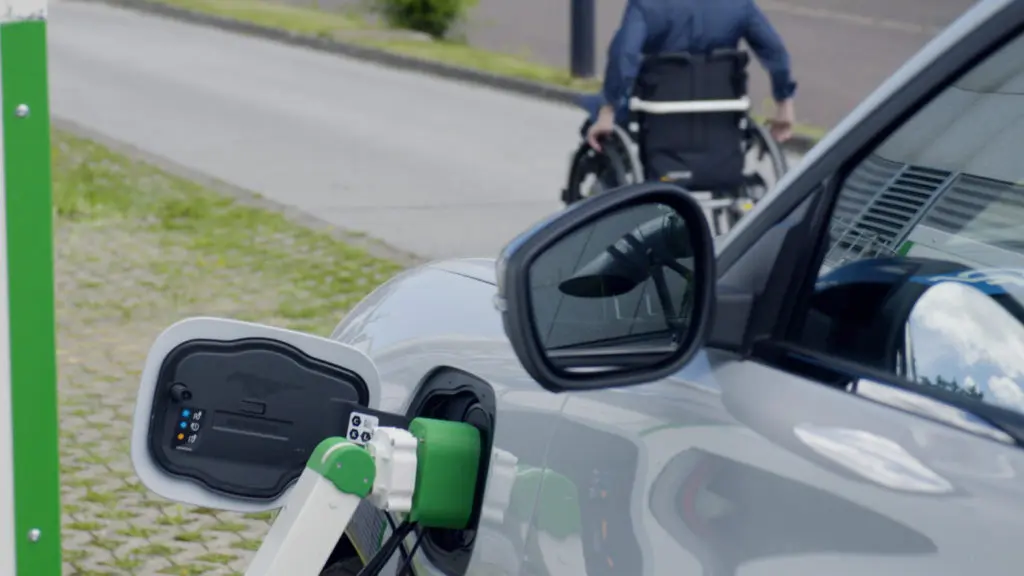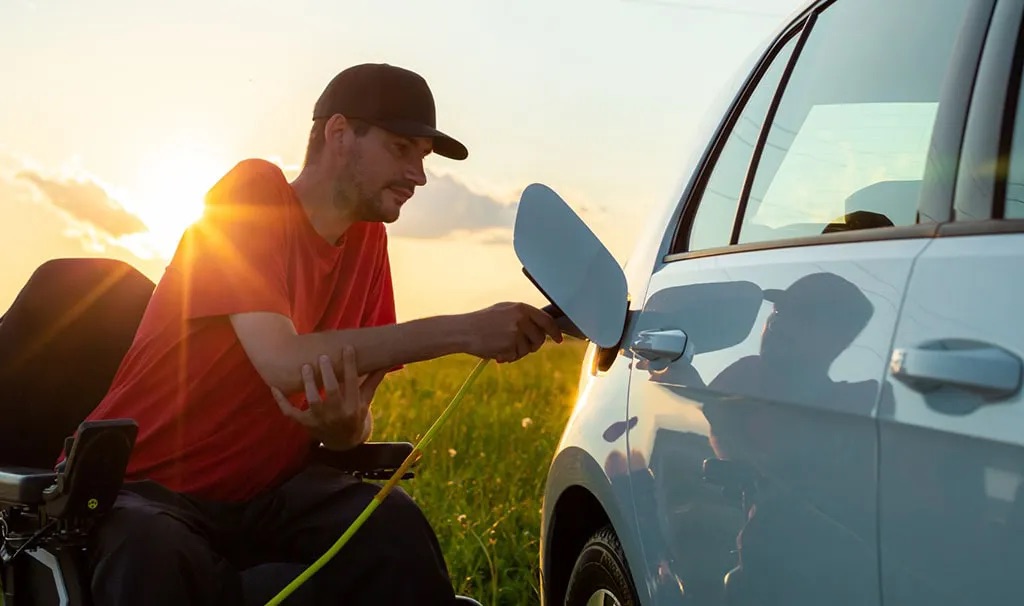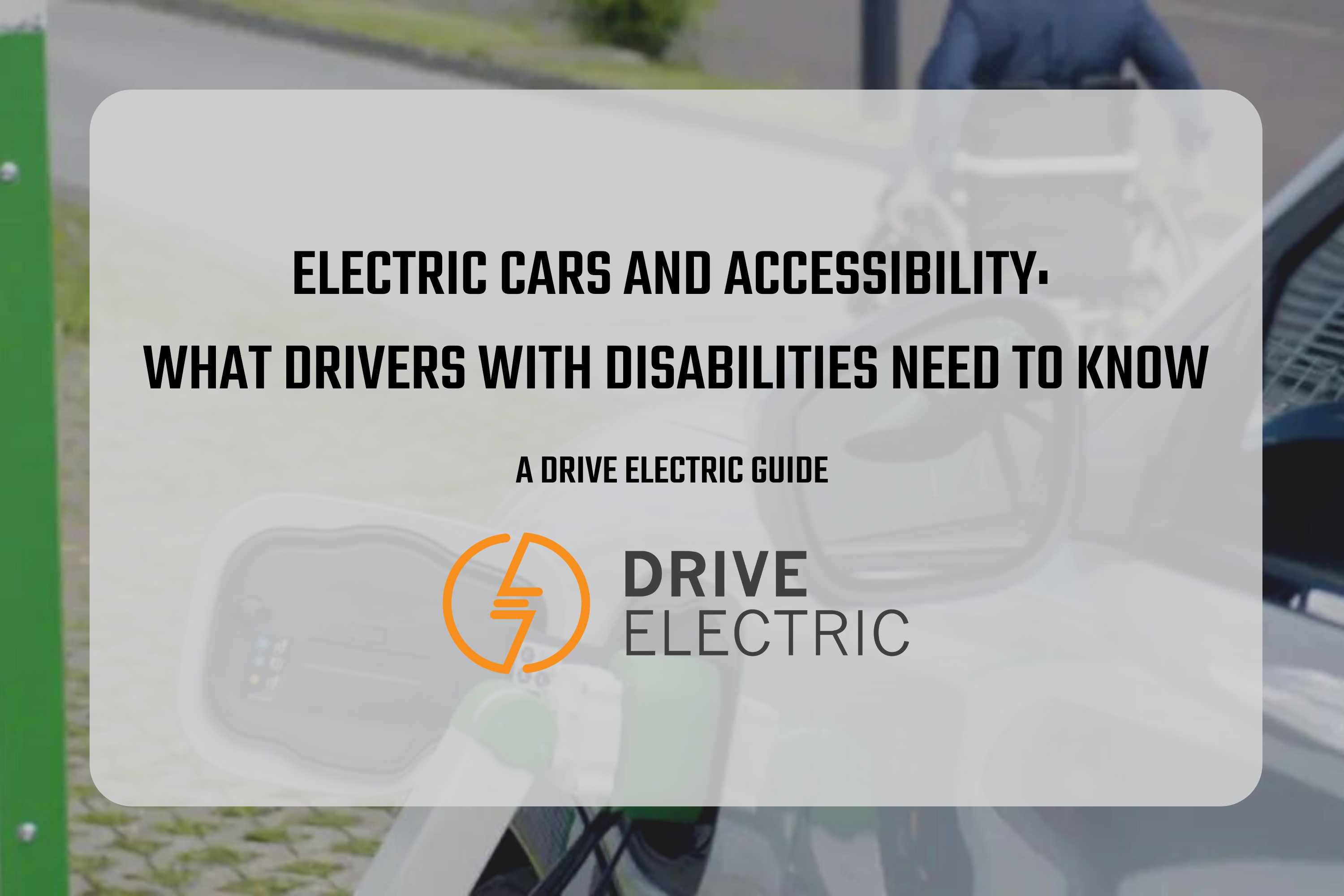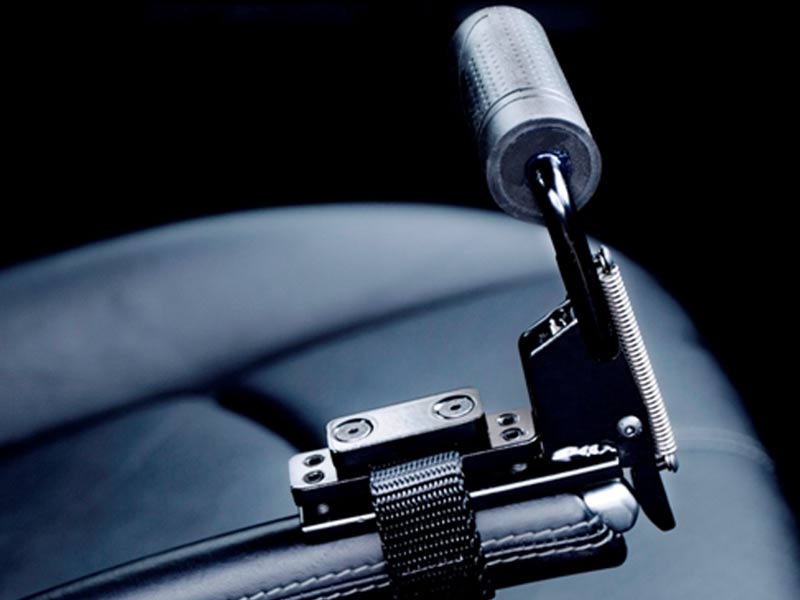Adapted from information provided by AutoTrader UK.
With almost 50,000 plug-in vehicles registered in New Zealand as of August 2021, it’s clear that our nation is committed to a large-scale transition to electric transport. What does this mean for those with accessibility requirements?
In this guide, we’ll look to give people with disabilities a comprehensive breakdown of how to make the most of your EV experience.
From looking at the barriers you might face, to finding the best ways to overcome them, we’ll explore what support is available, the pros and cons of getting behind the wheel of an electric model, and what changes are being made to make driving EVs more accessible for all.
IN THIS GUIDE, WE COVER:




Accessibility on the road

Driving can be a very different experience if you have a disability. Drivers with mobility challenges face hurdles which some road users wouldn’t even think about.
Accessible driving statistics
Cars are becoming increasingly accessible for all drivers – but there’s still a noticeable gap between drivers who do and don’t have a disability on our roads. As per the UK’s latest transport statistics, research shows that there is a big gulf between the average distance travelled by someone with and without an accessibility requirement.
In the New Zealand context, there is a lot of work to be done in this space. In 2018 (further supported by a 2021 update), the Ministry of Transport released a Transport Outcomes Framework. The purpose of this document was to identify the five core outcomes required to improve wellbeing and liveability for New Zealanders.
One of these outcomes is inclusive access.
Inclusive access enables all people to participate in society through access to social and economic opportunities such as work, education and healthcare.
To be inclusive, the transport system must be accessible to all people in New Zealand including those with disabilities, low income earners, and people of different ages, genders and ethnicities. The Ministry of Transport has acknowledged that there are significant research and data gaps when it comes to our knowledge of the current situation for drivers with disabilities in New Zealand.
Current disabilities which affect driving
There are a variety of medical conditions which can impact your ability to drive. Whether these are physical or non-physical, conditions from birth or something which may have developed over time, they can all play a role in someone’s ability to drive. Some of the most common conditions which can result in challenges on the road include:
Arthritis and joint pain
Stiffness or lack of mobility in your joints can make handling a car incredibly challenging. Additional mirrors, cameras to lessen the need for neck movement and hand-controlled pedals are usually employed to help people with these kinds of conditions.


Amputation or other limb disability
The loss of a limb, whether arm or leg, will have a big impact on a driver’s ability to steer, change gears (in manual cars), and use the foot pedals. It may also make it difficult to recharge or refuel a vehicle.
Neurological conditions
These kinds of conditions can affect reaction speeds, while weakening of the muscles caused by things like Multiple Sclerosis (MS) may also make it hard to control the wheel. Adaptations may also be required simply to help a driver get in and out of their car.


Our bodies ageing
As we age a number of the senses most vital for driving tend to worsen – namely vision, hearing and our ability to react quickly in certain situations. It may also become harder to remain as agile in the car for requirements like checking mirrors and blind spots.
DRIVING AN ELECTRIC VEHICLE WITH A DISABILITY

If you’re interested in driving an EV, it’s important to understand how to maximise the performance of your car to help you.
Benefits of an EV for someone with a disability
Electric vehicles present several advantages for those with a disability. We all know about the environmental benefits of driving EVs, but how else can they help someone who is registered as disabled?
Some of the areas where using an EV can be beneficial include:
A smoother ride
The clunky vibrations which can be associated with older ICE vehicles are a thing of the past for drivers of EVs. This can be particularly helpful to drivers who experience muscular dystrophy, severe joints pains or similar conditions triggered by excess movement.


Reduced noise
Likewise, any driver who is sensitive to loud noises – for example someone who has tinnitus – will enjoy the welcome relief of a quiet, battery-powered vehicle. EVs are actually so quiet that they often have to be fitted with external sound emitters to ensure pedestrians know a car is nearby.
Non-grip charging
While charging an EV certainly poses a series of hurdles (more on that later), it can at least be said that the process itself requires less time spent manually gripping – unlike in the case of a nozzle-fuelled ICE vehicle. This is a major help to those with muscular problems, artificial limbs or any kind of joint pain.


Lower running costs
Electric vehicles are significantly cheaper than gas-powered cars to run and maintain. Most Kiwi EV drivers save over $2,000 per year in petrol bills. Check out this handy total cost of vehicle ownership tool from Gen Less to see how an electric vehicle would impact your current transport costs.
Also, New Zealand has implemented a raft of discount policies to reduce the upfront cost of electric vehicles.
Learn more about the cost of an EV in New Zealand here.
Barriers to driving EVs for drivers with disabilities
While the needs of drivers with mobility restrictions are being taken into consideration more now than ever before, there’s still progress which needs to be made to ensure all cars are fully accessible. According to a report by The Scottish and Southern Electricity Networks (SSEN), some of the most commonly cited barriers for drivers with a disability are:
Charging accessibility
This has become an ongoing issue for EV drivers with accessibility requirements. Charging points are often hard to access for those with mobility restrictions, while issues like the weight of chargers and access to them from parking locations can be an issue too.


Range anxiety and other psychological barriers
Range anxiety is the name given to the fear of an EV running out of power before reaching its next potential charging point. However, there are thousands of public electric vehicle charging stations across New Zealand. You can find them in public areas like supermarket car parks, shopping malls, campgrounds, tourist spots and beaches. Most major petrol companies have also installed EV chargers at many of their sites.
Learn more about New Zealand’s charging network here.
Upfront costs
While purchasing an EV will lead to long-term savings, the upfront costs of buying the car are still relatively high. New Zealand’s current rebate scheme is helping to make low-emission vehicles more accessible, and as EV technology improves, new models will become cheaper.


A lack of information
Advice and support for drivers with disabilities is also sometimes hard to find. The same SSEN report found that most mobility impaired drivers will turn to able-bodied motoring specialists for their information, even though these are usually limited in providing support for those with specific medical conditions.
Getting a driver licence with a disability in New Zealand
Under current Waka Kotahi regulations, most people with physical disabilities can get a driver licence, and most people who had a licence before they acquired a disability can continue to drive.
Advances in vehicle technology, such as power steering and automatic cars, have helped make driving possible for people with physical disabilities. In addition, almost any standard production vehicle can be modified.
If you have a disability and you want to get your driver licence, you’ll still sit the standard theory and practical driving tests. If you can only drive in a specially equipped vehicle, the test will be carried out in that vehicle.
Consideration of individual cases is possible and you may be permitted to drive subject to special conditions. Unfortunately, some people – for their own safety and that of others – aren’t permitted to drive.
For information on where to find your nearest assessment centre, contact:
Accessibility improvements for EVs
Just as with traditional ICE vehicles, EVs are capable of being fitted with a number of adaptions to make them more accessible to drivers. Here are some of the best options that can be added to your vehicle.
What vehicle modifications can be made?
Modifications approved by Waka Kotahi that can be made to private vehicles include:
- Steering and secondary control aids
- Left-foot accelerators
- Clutch conversions
- Additional car mirrors
- Wheelchair stowage equipment
Some vehicle modifications require inspection and certification to ensure they are safe. These include:
- Hand controls for braking and accelerating
Introducing something like a push or pull device to help with accelerating and braking can be useful for drivers who aren’t able to freely use the lower half of their body.
For those who aren’t able to freely use pedals when driving, but also lack the strength to use a push and pull lever, there are a series of electronic accelerators available. These can be placed throughout different areas of your vehicle:
-
- Trigger accelerator – You pull this forward to accelerate and push away to brake
- Over ring accelerator – This is placed on the steering wheel, pushing down to accelerate
- Under ring accelerator – This is put behind the wheel, with speed controlled by you pulling it towards the wheel
- Ghost ring accelerator – This is also fitted behind the wheel, with a driver controlling speed by moving it from side-to-side
- Seatbelt modifications, harnesses and special seating
- Joystick and foot steering
If you have trouble holding or moving a traditional wheel, a number of additions can be added. This includes a ball or four-way joystick which can be used in one hand to control the direction you’re heading, accelerate and brake.
- Pedal modifications
If you still want to use pedals as they are traditionally intended, you can extend them to reach up to your feet. This makes driving more comfortable and simple for those who cannot reach them at the standard distance.
- Infrared remote control systems
These systems enable drivers to get in the vehicle and drive from a wheelchair with complete independence.
Who carries out these modifications?
If a vehicle has to be modified, the alterations must be carried out by a person with the appropriate skills and experience.
A health professional experienced in driver training and an approved low volume vehicle certifier will ensure that the vehicle is safe and the alterations meet the needs of the user.
The following organisations can give you more information about certifiers who can inspect your vehicle and can advise you about vehicle modification for drivers with physical disabilities:
How do you know what vehicle adaptations you need for your disability?
If you have a physical disability, you should get professional assistance from a driving assessment service. These services can:
- Test your driving ability on the road.
- Give advice on the controls and adaptations you need for access, seating, and to drive safely and in comfort.
- Evaluate your muscle strength and range of movement.
For information on where to find your nearest assessment centre, contact:
HELP WITH CHARGING YOUR EV

Charging an EV can be one of the most challenging aspects of ownership when you drive with a disability. Let’s take a closer look at exactly why that is, and what’s being done to resolve the issue.
Accessibility barriers at charging points
There are a number of key barriers for people at charging points. Some of the biggest problems for drivers with a disability include:
The charging process
Reaching, using and handling the actual charge point itself has been cited as a real problem for a lot of drivers. Many find it heavy to hold, and find it a challenge to locate assistance when they need it. A recent survey reported that 41% of people found moving the charging cable to be difficult. 54% also said lifting the cable from the boot was a challenge.


The environment itself
Having space to comfortably move around both in and out of the car is already a key requirement for drivers with a disability. Many find that EV charging zones can be quite hard to access, most often owing to the absence of dropped kerb access and a flat parking area with level access.
General lack of accessibility
Last but not least, ‘inconvenient locations’ has also been cited as a barrier for EV drivers with disabilities. In New Zealand, most of our public chargers are available in fully accessible car parks, fuel stations and recreation areas. As the government and charging companies continue to strengthen the charging network, hopefully this will become a less significant barrier in the coming years.

Possible solutions to mitigate EV charging barriers
EV drivers with a disability can also remain hopeful about a series of potential future solutions to the hurdle of charging. Some of the options include:
Car design changes
As motability issues continue to be discussed, it’s the responsibility of manufacturers to guarantee enough is being done to accommodate all drivers. That means modifying cars to be accessible for everyone, with ample space for any necessary medical equipment. It could also see the charge point of the car swapped in accordance with the need of the driver.


Longer trial periods
While it takes time for any driver to get used to a new vehicle, the process can be even more challenging for someone who also has to balance driving with a disability. As such, they may need longer than what’s offered to be able to make an informed decision.
Changes to charge point designs
Points can be made lower and more accessible (we’ve already discussed how Urban Electric are doing this), while payment systems can also be streamlined to make the process as easy as possible for those with cognitive or visual restrictions.


Inductive charging
This futuristic technology allows for a car to be charged by being parked over a specific spot. Electricity is sent through the air at a gap of four inches to a coil, which is attached to the underside of a vehicle. This method requires precision in parking – but with the continued efforts being made to perfect self-driving cars, it could be a realistic option for all drivers in future.
The future is electric.
As New Zealand prepares for accelerated EV uptake, more consideration must be given to inclusive access for people with disabilities and the unique accessibility challenges (and benefits!) that electric cars present.
In the coming months and years, we look forward to providing electric transport insights as the government and supporting organisations work to fill information gaps and improve access for drivers with disabilities.







